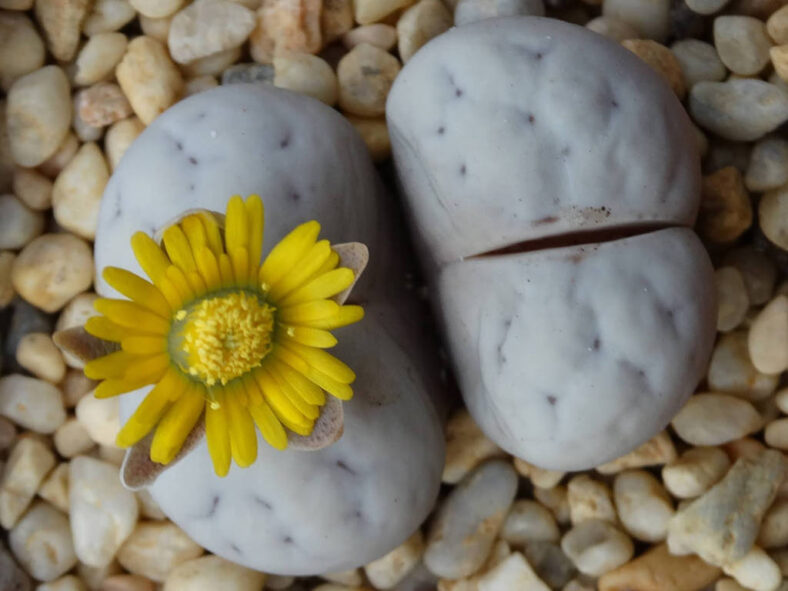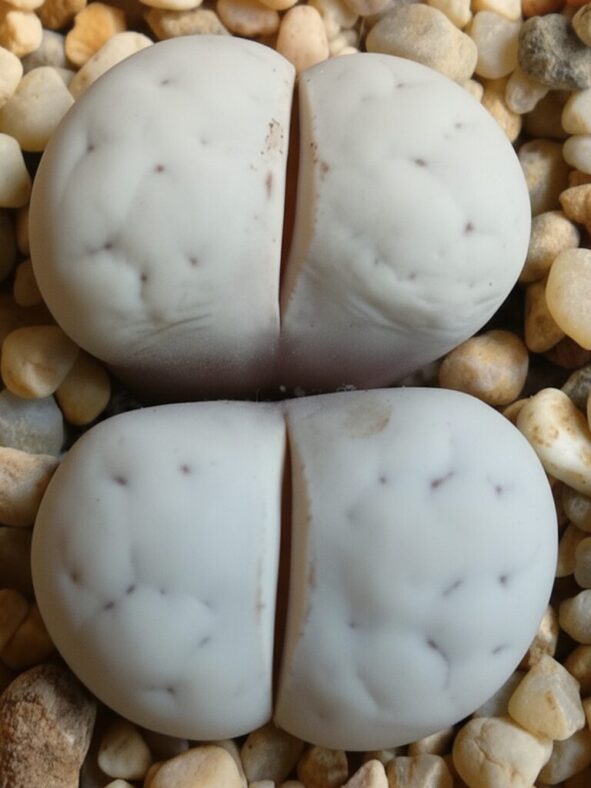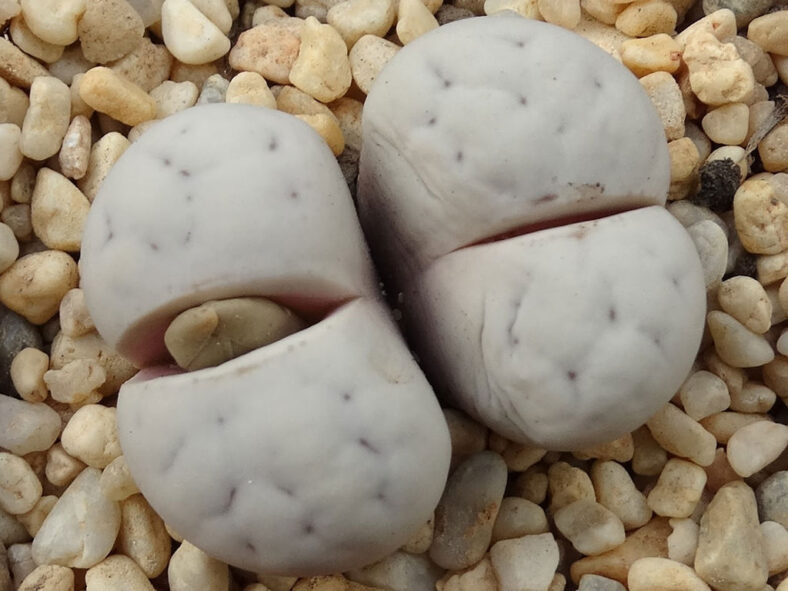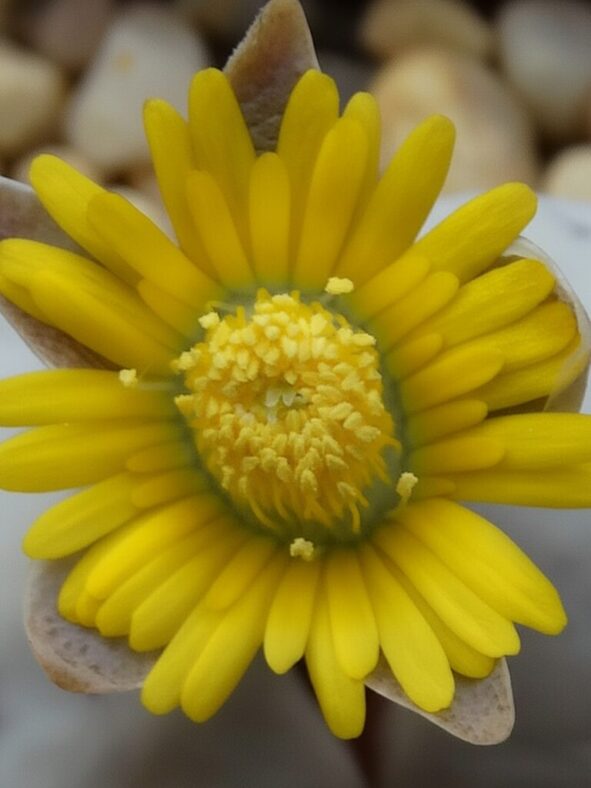Lithops ruschiorum var. nelii is not recognized as a separate variety and is treated as a synonym of Lithops ruschiorum. It differs from the typical form of Lithops ruschiorum by having smoother and paler bodies.
Scientific Name
Lithops ruschiorum var. nelii (Schwantes) Schwantes
Accepted Scientific Name
Lithops ruschiorum (Dinter & Schwant.) N.E. Br.
Common Name(s)
Bushman's Buttocks, Hottentot's Buttocks
Synonym(s)
Lithops nelii, Lithops ruschiorum subsp. nelii
Scientific Classification
Family: Aizoaceae
Subfamily: Ruschioideae
Tribe: Ruschieae
Genus: Lithops
Etymology
The varietal epithet "nelii" (pronounced "NEL-ee-eye") honors Gert Cornelius Nel (1885-1950), a South African botanist, plant collector, and professor of botany at the University of Stellenbosch.
Origin
Lithops ruschiorum var. nelii is native to Namibia. It occurs in a few locations near Cape Cross.
Description
Lithops ruschiorum var. nelii is a dwarf succulent with bodies that consist of two plump, fused leaves that are opposite each other and have a deep central fissure. The bodies vary in color from white, white-grey to greyish-yellow, with occasional faint red spots or lines, although these are often absent. The side profile of the bodies is heart-shaped, and they can grow up to 1.6 inches (4 cm) tall and 0.8 inches (2 cm) wide at the fissure.
In the fall, Lithops ruschiorum var. nelii produces solitary, yellow flowers, which have many narrow petals. The flowers emerge from the fissure between the leaves and open in the afternoon. They can reach a diameter of 1.2 inches (3 cm). The fruits are 5-locular capsules that contain tiny, brown seeds.

How to Grow and Care for Lithops ruschiorum var. nelii
Light: A sunny windowsill where the plant receives 4 to 5 hours of direct sunlight during the early part of the day and partial shade during the afternoon is the perfect spot. You may place the plant on the balcony or in the garden from spring to fall.
Soil: Lithops ruschiorum var. nelii thrives best in soil that will drain quickly. Use a commercial potting mix for succulents, or make your own.
Temperature: High temperatures are not a problem for this plant as long as there is plenty of fresh air, but it is not a cold-hardy succulent. It is hardy in USDA Plant Hardiness Zones 10a-11b, which have average annual extreme minimum winter temperatures ranging from 30°F to 50°F (-1.1°C to 10°C).
Watering: Since this plant has a specific yearly growth cycle, it is essential to water only during certain stages, but it is also important to keep the soil dry at other stages of its growth. How often you need to water Lithops ruschiorum var. nelii depends on how quickly the soil dries out. Stop watering during the winter to allow the old leaf pair to dry out and the new pair to develop.
Fertilizing: As long as you repot this plant every two years, it does not require any fertilizer.
Repotting: Although this plant can thrive in the same pot for decades, it is beneficial to repot it occasionally to provide more space. The repotting can be done at any time during the growing season, but the best time for repotting is at the beginning of that season.
Propagation: Lithops ruschiorum var. nelii is primarily propagated from seeds sown in summer. However, if you have a multi-headed plant, it can also be easily propagated by division.
Learn more at How to Grow and Care for Lithops.
Toxicity of Lithops ruschiorum var. nelii
Lithops ruschiorum var. nelii is non-toxic and safe to have around children and pets.
Links
- Back to genus Lithops
- Succupedia: Browse succulents by Scientific Name, Common Name, Genus, Family, USDA Hardiness Zone, Origin, or cacti by Genus
Photo Gallery
Click on a photo to see a larger version.


